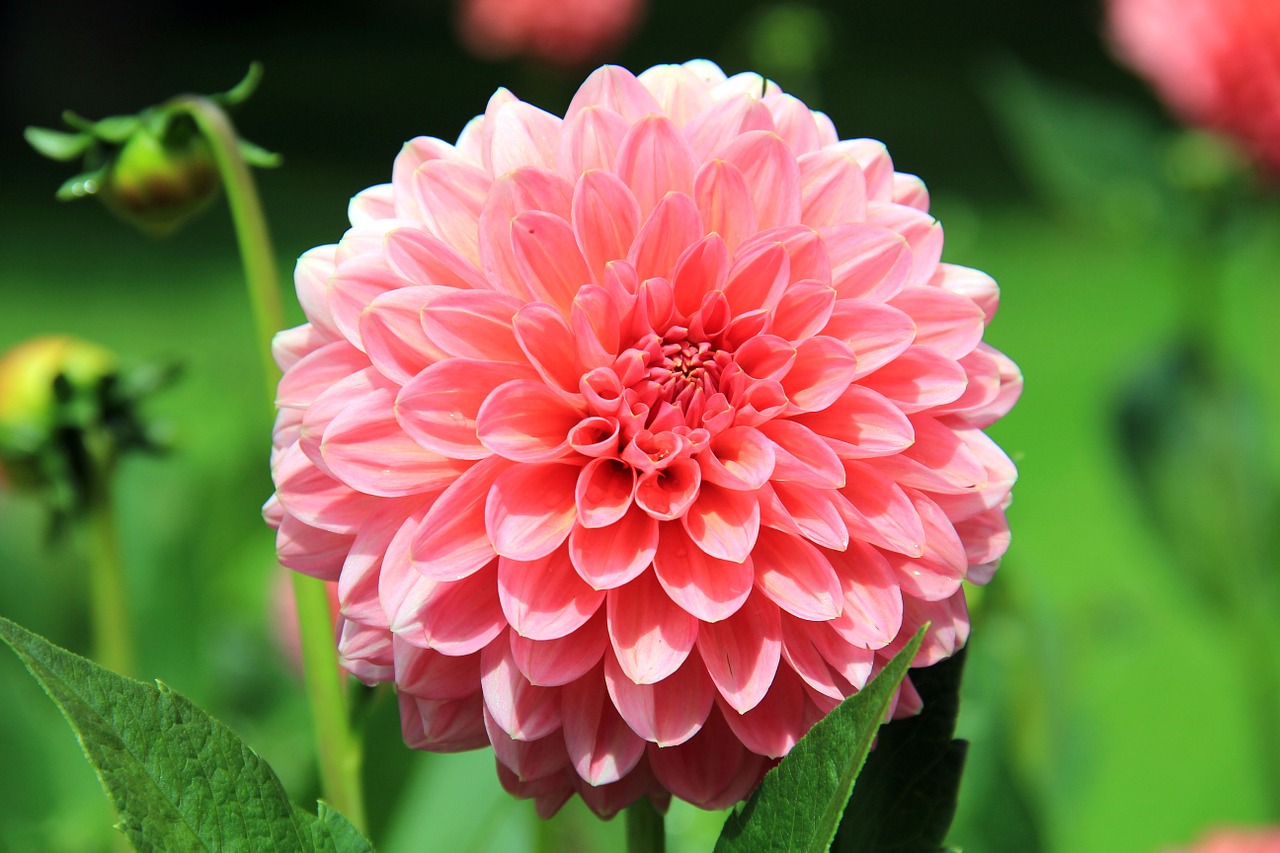For some growing Dahlias for cut flower or for garden colour is much the same thing. But when we want a steady supply of vegetables we don’t expect much from a few clumps of Carrots or Potatoes dotted around the borders. These are normally grown in dedicated beds suited to their needs. I would usually advise that plants grown for cut flowers are treated in the same way.
When comparing the methods between growing for show or the vase indoors there is little difference in the methods of care. The ways used by the showman can be used to get the best from your plants.
Here are my tips for some great bunches all summer.
Types & Form.
When selecting varieties think differently from those you may choose for the border. Very large flowering types stand out in the beds but are probably too large for the vase. These are also restricted in flowers to get full size, so will not offer many flowers over the season. The smallest of flowers (Poms) work well for cutting as their natural habit is to continually produce flowers as they go through the season. They won’t make an impact when looking down the garden but their perfection is stunning up close. I would also avoid the single flowering types such as Collerettes, Stars and Singles. These are pretty to look at but do not last very long once cut. Waterlily types seem to be best in both worlds as they are free flowering double forms, normally held on long stems, these and any of the Miniatures which produce up to 4” diameter flowers will be great.
If you not sure on what varieties to start with, the National Dahlia Society recommend some good performers and the National Dahlia Society recommended badge can be seen on the packs in many Garden Centres
How to grow them.
As these are plants for a purpose then I would suggest having an area dedicated to them as the best way. Like myself growing to exhibit, a double row of plants that can be tendered from both sides is ideal. This would need to be about 4ft wide and as long as you need with plants spaced at 2ft in each direction. If like me you are short of space then a 6ft wide bed will allow for a triple row, although this is not as comfortable as you need to tend the first row and half the middle row from each side. Make sure you allow at least 4 ft between the beds as you will not be able to move down them once the plants are flowering. Prepare the ground by digging over in the winter and rake through some Blood, Fish and Bone or poultry pellets 3 weeks prior to planting.
As you want flowers as soon as you can, choose early strong plants or already growing split tubers as these will flower first. When planting, remove the growing tips to leave 3-4 Pairs of leaves. This will encourage the lateral growth to grow sooner and is where the flowers will come from. Support the plants with either a central stake or my preferred method of 3 canes in a triangle around the plant and tie with string. Regular watering and the occasional feed is all they will need until they start flowering. Feeding with a balanced feed such as Miracle Grow early will build a strong plant then use Gro-sure or tomato food which is high in potassium when the buds form.
As we all know earwigs like the flower but are only a problem at flowering time. A couple of sprays with Resolver Bug Killer when the buds start appearing seems to put paid to them. I have found this more effective than most on the market at the moment.
To promote good stems and repeat flowering, I always suggest side shooting (like most do with tomatoes) the side buds and the next side shoots down from the bud. This really does make a difference and will set the plant into a flushing routine throughout the season.
If grown with some care, I would say that 10 to 15 plants will keep a vase full plus your friends and neighbours from early July to the end of October andeven beyond .
Good luck and enjoy.
Dave Gillam

